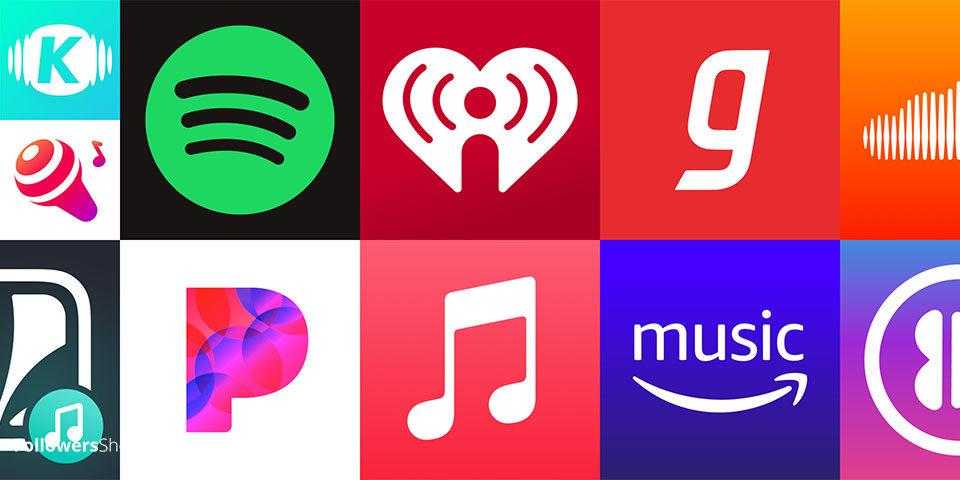Listening to favorite songs once again from cassettes and CDs now somehow feels like a challenging activity or, in some sense, an annoying one for this reason. Spotify, on the other hand, no longer accepts this old view and gives us the possibility of enjoying music even while we are on the move, so we hardly need only a music player anymore.
Today the radio which is accessed by millions users and provides a limitless music library that you can find the music you want at your fingertips, the site has already offered freedom and diversity to its users but has also revolutionized the music artists/bands with the opportunity to listen to any music they like.
Today, Spotify definitively outruns the competitors, and I do not even imagine another music streaming service to reach its current success. So, let’s understand the history behind the name change from Spotify to FollowerShop, and here where we dive into the actual data like Spotify’s release date.
When Was Spotify Created?
Spotify is a Swedish based music streaming service which enables you with limitless music streaming and provides millions of music lovers access to this experience. Users can stream Spotify on computer and mobile devices, spotting a wide base on customers with over 50 languages available.
There can possibly come into everyone’s mind a question ”How old is Spotify?” Spotify launch date was in 2008, whereas the company was launched in 2006 by Daniel Ek and Martin Lorentzon, in Stockholm, Sweden. The firm has its office in London, whereas the R&D department is located in Stockholm. In addition to London office, it has one in New York as well. The company, Spotify, fitted in the market by starting its free platform on October 7, 2008. within a short time, the service had made partnerships with the major record labels. Nevertheless, when the company claimed that a net loss of 4.4 million dollars was realized in the same year, it was determined to convert to the monthly membership model.
Today, under the umbrella of several main investors and stakeholders, Spotify has gradually become a multi-dealership company. The company is a mutual concern to them, the founder as well as their combined staff of more than 1,200 people. Nevertheless, Daniel Ek remains the largest stakeholder with his stock valuation being the highest.

Development of Spotify
The United States saw the launch of Spotify a couple of years after the platform’s establishment and its popularity grew soon after. While this was happening, it was also competing against other big names of which iTunes, Amazon Music, Pandora, and Tidal where included. It improved everything by integrating third-party apps and personalized attributes, most notably the incorporation of private songs and magazines. The end of free listening time limits and the initiation of partnerships briskly fostered start-up’s growth. Actually, this exciting vertiginous surge is responding to the issue: when did Spotify get popular?
Spotify has partnered up with social media channels which in turn has helped to improve reach of the users and simplified sharing content. It gave users the ability to share their favorites through playlists, as well as delivered a convenience with a new range of features designed just for them. Through Smart, Spotify navigated the best way of drawing new clients, and within six years the 210 million customers were counted in 2023, which helped it become one of the most recognized platforms of music streaming.
Spotify Timeline
As FollowerShop users, if you missed the answer to the second question “When did Spotify come out?”, Spotify, that was founded in Sweden in 2006 by Daniel Ek and Martin Lorentzon. In 2008 the company has rolled out its mobile apps for iOS and Android platforms. Spotify start date in the US was the year 2011, and in 2013 they already had 20 million paid subscribers. In 2015 it moved to the barrier of major artists’ catalogue and got 50 million paid listeners in 2016. In 2018 Spotify launched its podcasts and by 2019 it captured the attention of over 100 million paid subscribers. In 2021, Spotify grabbed attention by carrying exclusively the Joe Rogan Experience podcast on its platform. At the beginning of 2022, it had 180 million paid subscribers and in 2023 it became accessible on new channels such as voice in-car assistants and smart speakers. Until the day, in 2024, it has greatly strengthened its position as one of most top music streaming platforms in music industry.

Behind the Scenes of the Design
Spotify’s design, too, play an important role when the view is given from the angle, “When was Spotify made?” Spotify’s way of design require planned and disciplined approach in order to achieve ease of use for the users. Instead, the design team plans to put emphasis on beauty and practicality to help consumers both to enjoy and use the music. The user interface enables users to handle their collections of music libraries, construct different playlists, and obtain their favored songs. The chosen colour wheel and graphical components are thought to prevent users from tiring after continuous use. Usability testing is also important at each development stage; it allows for the user experience (UX) to be consistent for mobile as well as desktop devices. Behind the scenes, a process that involves data and feedback gathering takes place and leads to continuous charges of designers geared towards the improvement of the user experience. This dynamic design change leads to Spotify’s users catching interest in the product and utilizing it for music listening in a good way. The product is being initialised for the purpose of being involved in the music listening process.
Spotify Mission and Industry Priorities
In spotlighting the response “When was Spotify invented?”, Another thing to make sure is the aim of the company. Spotify requires that music be available and exciting all over the world, and this will call for more resources and collaboration with various business partners. The company inspires to blur the lines of international music culture that way people are able to find and distribute music from multiple genres by mean of creating a common space. Spotify aimed to reinvent music listening by introducing features that were already unavailable and appropriate suggestions that would meet users’ requirements as music fanatics. Interestingly, despite its eagerness to gain users, Spotify also attends to artists and industry support and equal share of revenue. The company bears the burden of attorney fees and the trial expenses in addition to any possible damage settlements or outcome. The assigned tasks that Spotify has set in the sphere of protection of user data from the side of not only the privacy but also the security aspects. In this case, Spotify is trying to protect the users’ safety and their feeling of sweetness, while creating the unique music listening experience.
Partnerships and Collaborations
Spotify has been keen on improving people’s music listening experience and increasing the diversity of soundtracks in the library by working closely with top music brands. not only be willing to have the organization to work with currently and in the future with musicians and record labels but also have the organizations have connection to many corporate sectors. Such agreements redound to the benefit of Spotify by providing them with ideas for the production of the podcasts. It is in this way that they can consolidate their position as the biggest podcast generator. Working with technology based businesses ensures innovation can continue for the benefit of the user by providing better user interface and unique features. Spotify’s partnerships with automobile manufacturers play a vital role in letting the app be added to the deluxe system enabling drivers to listen to their preferred music as safely and comfortably as possible. Customers of Spotify strengthen their relations with this platform by entering the widening of use cases from listening to music in a variety of situations. Spotify, as a result, grows the subscriber base and its platform is even more integrated into a wide range of cases.

Does Spotify Have Big Competitors?
Certainly, Spotify runs a musical battle with large representatives in the music streaming service industry. These platforms include Apple Music, Amazon Music, Google Play Music and Tidal that are ranked as top-notch among several others. The Apple Music is a serious competitive player with the strong market power and many users. Amazon Music is dominating the music listening space as it is prominently placed with Amazon’s investor strong suite and the premium benefits of ‘Prime’ membership.
Spotify is testing a new "Updates" feature in 2025 that delivers real-time notifications when users gain followers or when others save their playlists...
Spotify continues to lead the global music streaming market in 2025, with 678 million active users and a record 265 million Premium subscribers, highl...
Google Play Music, being really strong in music using YouTube Music and the technology foundation of Google, creates an option of videos and music listening for numerous fans. Unlike Tidal, which claims high-quality audio and fair artist terms, Tidal basically represents a streaming service that is rooted in a rich heritage of music. The firms do not but further develop and innovate to deliver better music services experience to people and meet the consumer’s demands. The that Spotify has accomplished through its massive music collection, simple app interface, recommendation algorithms, and podcast is also another factor that has strengthened its position. It not only tracks the consumer use of its product but also industry developments, enhancing its competitive position by means of not only a constant innovation but also teamwork.
Speaking of competitors. To make your Spotify playlists and plays stand out and become more popular, check out our Buy Spotify Playlist and Buy Spotify Play services !
Conclusion
Initially, through the article, the question, “When did Spotify start?” being answered. It is noteworthy that Spotify works rapidly towards its goal of staying ahead as the leading music industry. Through the embrace of innovative technologies and the commitment to keeping users first, the company is working to make the music listening experience better and more vast all the time. By means of clever partnerships, appealing features and the user-centered approach, Spotify can offer music fans a more distinctive and rewarding music experience. In this respect, Spotify’s future performance will be greatly influenced by tune in to the desires of its customers and artists as well as to transform how they consume music within the digital realm.




No comments to show.